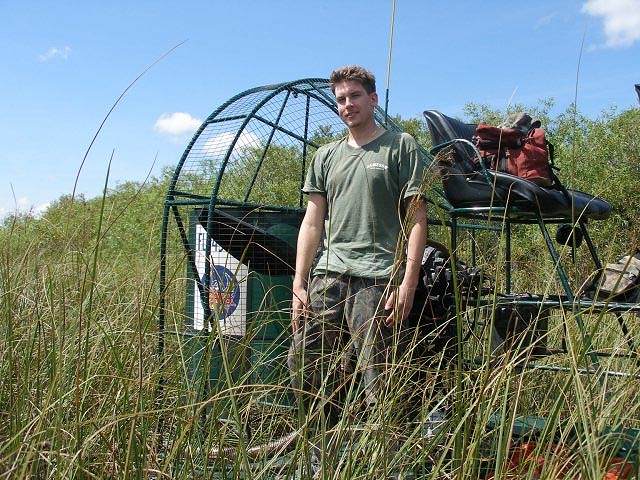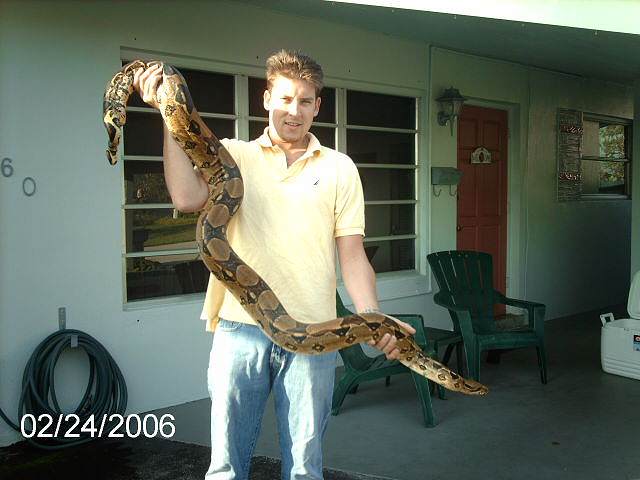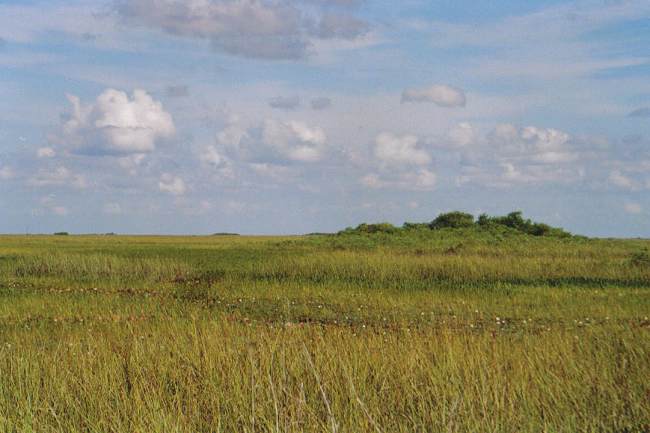- ! ! ! ! ! ! ! ! ! ! ! ! ! Latest Updates
- ! ! ! ! ! ! ! ! ! ! ! ! ! Latest Updates
- ! ! ! ! ! ! ! ! ! ! ! ! ! Latest Updates
- Home
- Boa constrictor subspecies
- Boa constrictor - Interesting Facts
- More boa information
- Boa Gallery
- Boas for Sale
- Contact
Report and photos by William R. Mohler III, Florida/U.S.
William R. Mohler is an ecology and organismic biology student at the Florida Atlantic University. He works in the ecology lab at Florida Atlantic University and in an entomology lab at the University of Florida. The current research is on the hydrology of the tree islands in the Water Conservation Areas and an ecological survey for invasive plant species.
Reptiles has long been a great hobby of him as well as prowling through the Everglades.
Please visit William´s blogspot: www.keepinitdirty.blogspot.com
The day started as a team of researchers and I began walking transects across an elevated mound of earth, commonly known as a tree island, in a Florida Everglades water conservation area close to Tamiami trail in Miami, Fl. The tree island itself was approximately two acres but did not have any dry areas, as some tree islands in the Everglades have. Are primary goal was to seek out an exotic species of tree climbing fern that is causing havoc in Florida Ecosystems.
 William R. Mohler on an airboat in
William R. Mohler on an airboat in
the Everglades
I moved a branch away from in front of my face and could not believe what I was seeing; calmly resting across a downed tree in approximately six inches of water was a full grown Boa constrictor absorbing some sun. This tree island was at least two km away from the nearest road or Levee, so it had either been released a long time ago and curiously made its way to this island or was released there by some individual on an airboat. At first the specimen made no attempt to flee, most likely because it was almost one and a half times bigger then me, but oddly enough it moved its head towards us as if it was curious as to why I was on its island. Since it is an exotic I decided to remove it from its implanted home. It gave more then a little fight, but not much. I grabbed it firmly behind the neck and with the help of a friend and co-worker carried it out of the Everglades. I named him “Lucky” because his fate was not yet decided.
I have always loved Boa constrictors, and even had a few individuals as an adolescent. Although, this is not the first time I have caught them in the wilds of sunny South Florida. The first time I was merely thirteen years old and my friends and I came across six or eight very small individuals lying in some grasses along a canal in Davie, Fl. At that time we assumed that these snakes were released by some irresponsible care-taker. But as I look back on that scenario, I can now envision the mother of those snakes not far off the side of the road sitting still in a nearby Australian Pine, which I would like to add is also an invasive species here in Florida, waiting in complete stillness for an unknowing song bird to come within striking distance.
Boa constrictor Florida Everglades | Boa constrictor Neobiota | Boa constrictor Neozoa | Boa constrictor plague in the Everglades | Everglades ecology
It is hard to fathom a sighting of a Boa Constrictor in the Everglades, perhaps I thought I would see a Burmese python or Reticulated python due to the fact that sightings have already been confirmed. I am asked very frequently if I come across many Burmese pythons as I survey the Everglades tree islands in Water conservation areas 3A and 3B in Broward, Dade, and Monroe counties.
I suppose people think there are very large numbers of pythons out in the glades, because that is what makes the news. I have been on many Tree islands and this is the first time I have seen a large constrictor or rather any constrictors, besides the six foot Yellow Rat snake I came across a couple of months ago. Perhaps the snakes are farther south then where I work, in more tropical climate areas.
It is hard to fathom a sighting of a Boa Constrictor in the Everglades, perhaps I thought I would see a Burmese python or Reticulated python due to the fact that sightings have already been confirmed. I am asked very frequently if I come across many Burmese pythons as I survey the Everglades tree islands in Water conservation areas 3A and 3B in Broward, Dade, and Monroe counties.
I suppose people think there are very large numbers of pythons out in the glades, because that is what makes the news. I have been on many Tree islands and this is the first time I have seen a large constrictor or rather any constrictors, besides the six foot Yellow Rat snake I came across a couple of months ago. Perhaps the snakes are farther south then where I work, in more tropical climate areas.
 This 8’ 6” Boa sighting and capture in the Florida Everglades was amazing.
This 8’ 6” Boa sighting and capture in the Florida Everglades was amazing.
Needless to say though, it is definitely a problem. This particular individual was so large and fat that I suspect it had been eating very well. The numbers of native water fowl and song birds it had eaten since the time of its release is most likely very high. This is a serious problem for the ecology of the Everglades. There are no natural enemies to these invasive exotic snakes and therefore a quite detrimental situation arises.
Thanks to my co-worker and friend Craig we were able to remove it from the Glades where it had no business being; even though it looked so content sitting there on its own private island.

